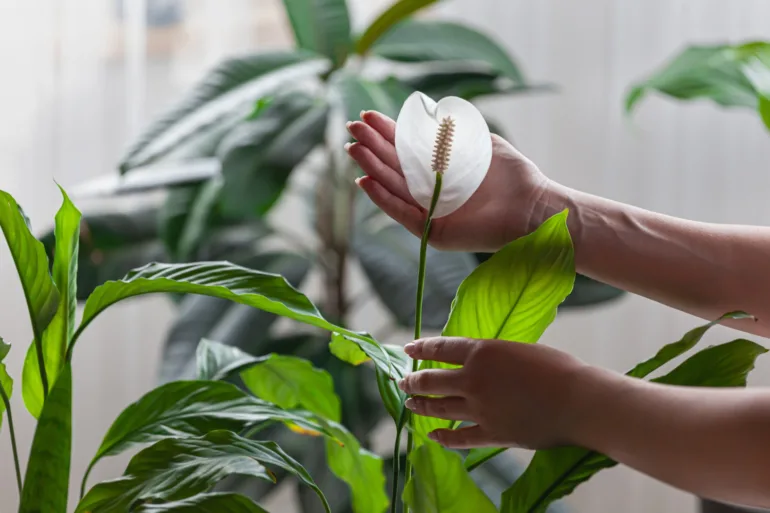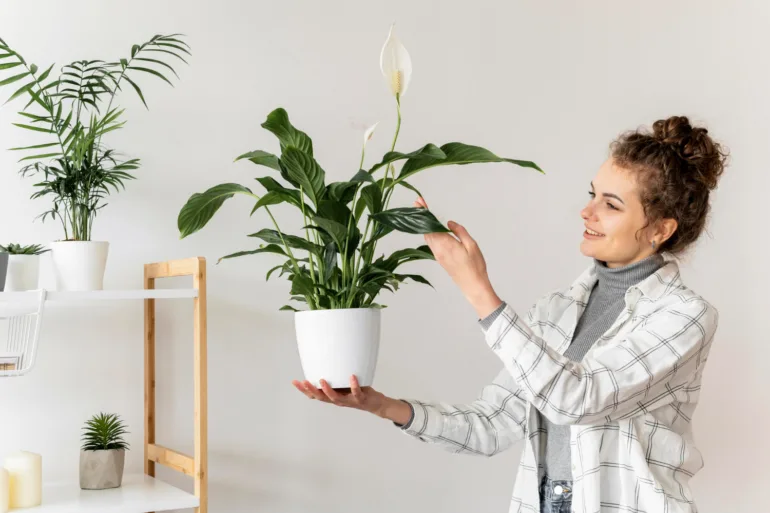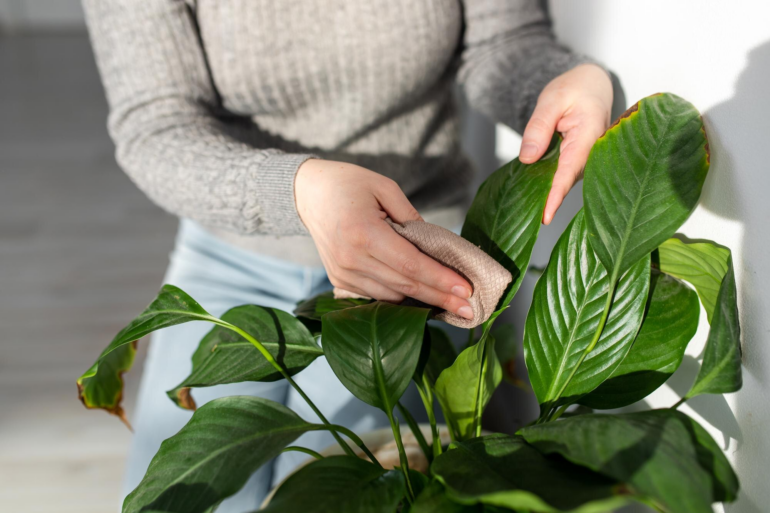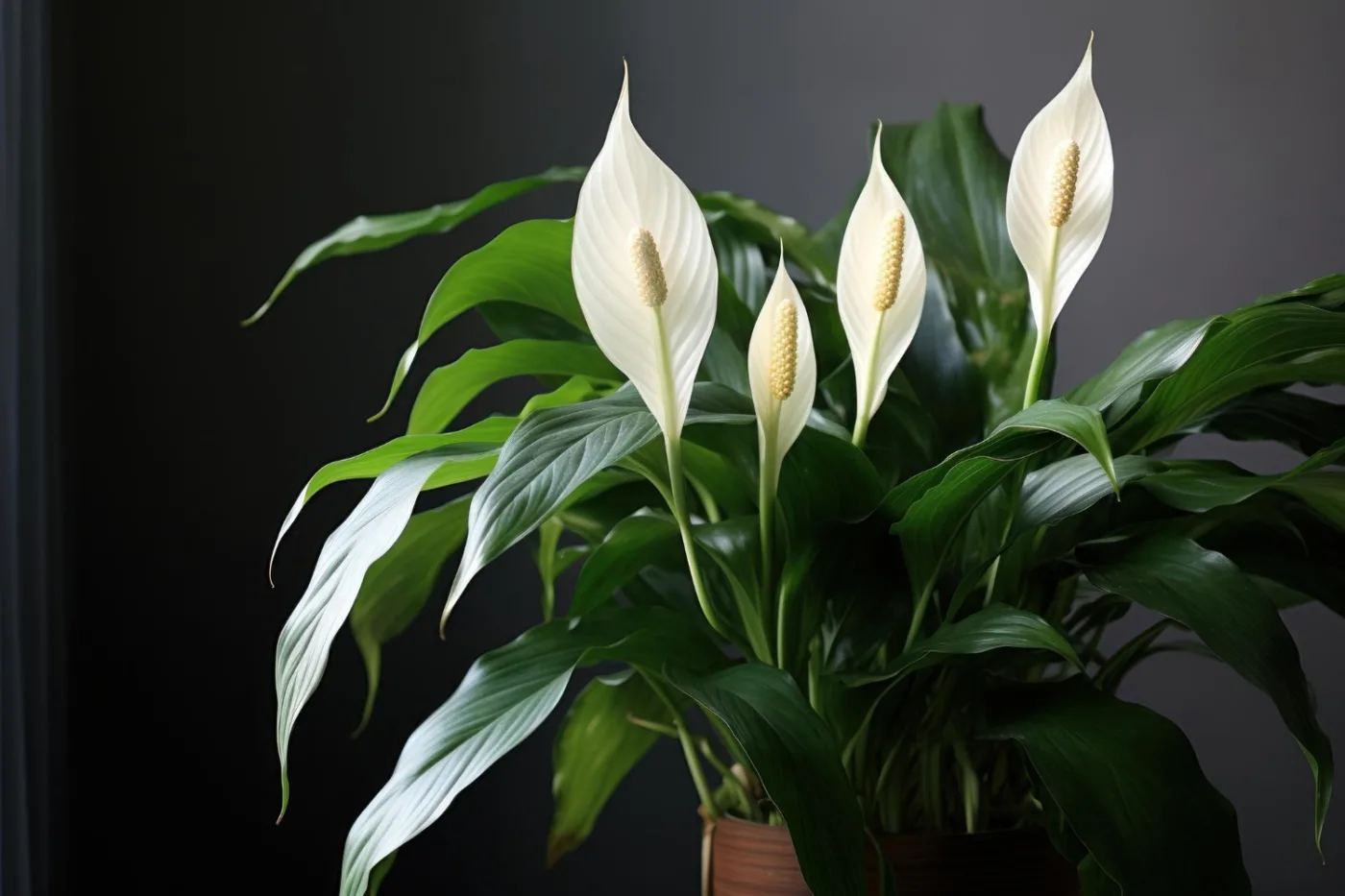Spathiphyllum often blooms beautifully for a while, then the flowers disappear and never appear again. Why does this happen and how can you ensure that it blooms regularly and for a long time again?
Spathiphilus is one of the most popular houseplants. Its elegant white flowers and dark green leaves refresh any space while emitting a sense of peace and order.
And yes it will be plant really long flowering, it needs more than just watering here and there. Many people complain that their plant does not bloom or that it wilts quickly. The reason for this is often due to wrong care – too much water, too dry soil, wrong location or lack of nutrients. With the right steps, however, the spathiphyllum can come back to life and bloom several times a year.

Adequate light is the basis for spathiphyllum
Spathiphyllum needs lots of light, but it cannot tolerate direct sunlight. A place near a window with diffused light is best for it. If it is placed in a corner that is too dark, it will not bloom. If it is placed in direct sunlight, the leaves may burn and turn yellow.
Constant temperature without drafts
The plant grows best at temperatures between 18 and 24 °C. It does not like sudden temperature changes or cold air. If it is placed near windows, doors or air conditioners, it may stop blooming.
Watering should be moderate.

Spathiphyllum likes moist soil, but it does not tolerate standing water. Water it when the top layer of soil is dry. The water should be at room temperature. If the roots are constantly wet, they will start to rot, the leaves will wilt, and there will be no flowers.
Homemade growth-boosting mixture
For better flowering, you can use a natural mixture that you prepare yourself:
– one teaspoon of milk
– one drop of honey
– 250 ml of water (1 glass)
Water at the roots once a 10 to 14 daysThe mixture stimulates growth, strengthens the leaves and helps the plant recover. The first results are visible within a few days - the leaves become firmer, new shoots appear and, over time, flower buds.
Regular cleaning of sheets

Dust on the leaves hinders growth. Gently wipe the leaves with a soft, damp cloth. This will help the plant breathe more easily and absorb light more effectively.
Transplanting and pruning
If the pot is too small, the plant will not bloom. It is recommended to transplant the Spathiphyllum every two years into a slightly larger pot with fresh soil. Remove old, dry or damaged leaves. This will allow more energy to be directed towards new shoots and flowers.
Spathiphyllum is not demanding, but it does need the right conditions.






